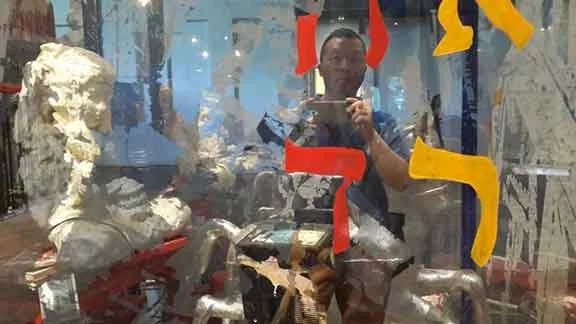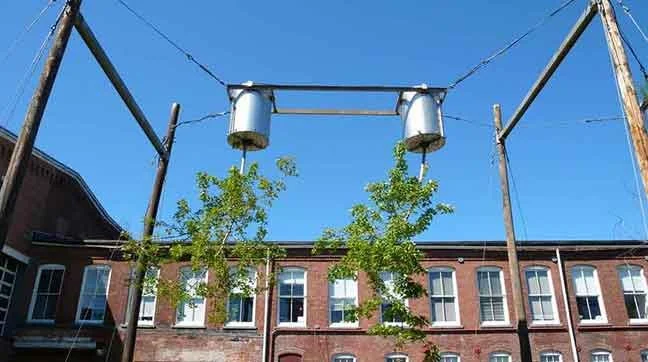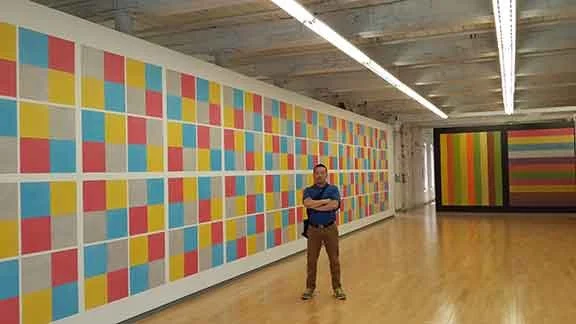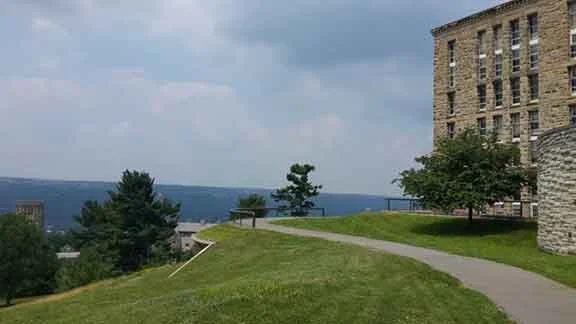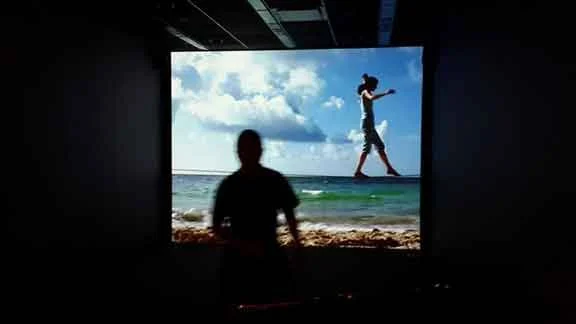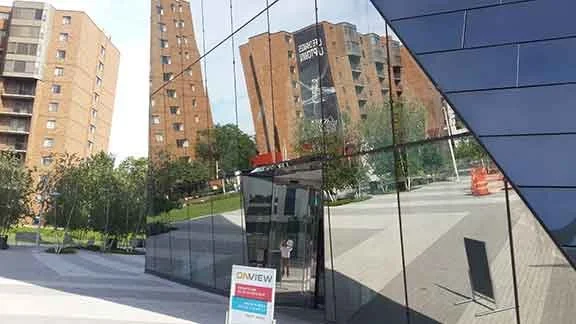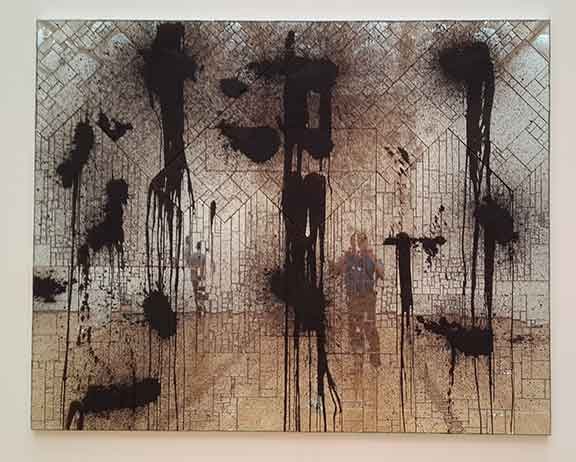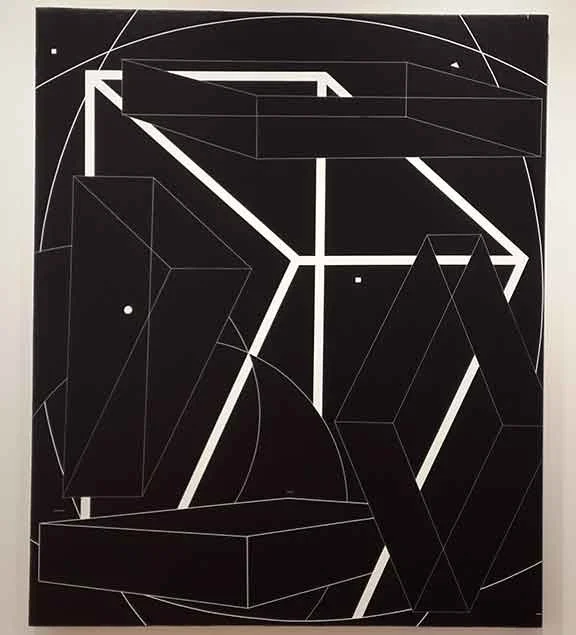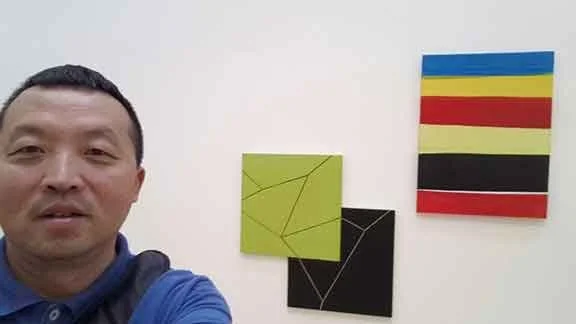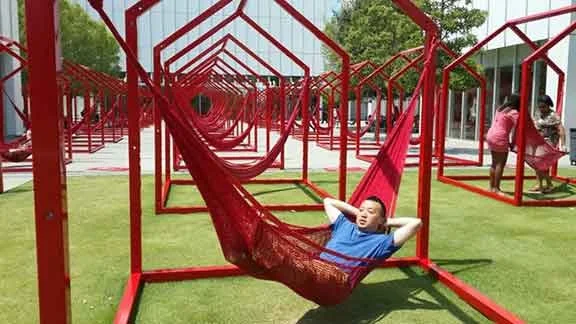An East Coast Road Trip Through Art
In the summer of 2014, I set out on a three-week road trip across the East Coast of the U.S., starting from Brattleboro, Vermont. I visited key contemporary art spaces along the way—Mass MoCA, Cornell University, Cleveland, Atlanta, and Philadelphia—covering over 2,300 miles. It was a journey to reconnect with the power of art in physical space.
Le Xi 奚乐’s 2014 East Coast art journey through museums and exhibitions.
My first stop was Mass MoCA, where I saw Izhar Patkin’s solo exhibition. His large-scale works on silk told layered stories full of history, poetry, and cross-cultural meaning. The space felt dreamlike, blurring the line between painting and installation.
Izhar-Patkin’s solo exhibition at Mass MoCA
Izhar-Patkin’s solo exhibition at Mass MoCA
Outside, Natalie Jeremijenko’s public piece Tree Logic (1999) really struck me—six live trees hang upside down, yet continue to grow toward the light. It’s a poetic act of defying gravity and expectations.
Tree-Logic,1999,By Natalie Jeremijenko, photographed in 2014 by Le Xi 奚乐
I also revisited Sol LeWitt’s wall drawings. Once again, I was deeply moved by the way he transformed pure logic into something felt. His work continues to shape how I understand the connection between thought and experience. A quiet tribute to a conceptual art pioneer.
Caught a moment with Sol LeWitt’s wall drawings at Mass MoCA
At Cornell University, I watched Touch, a nine-minute video by Janine Antoni. In it, she walks a tightrope stretched between land and sea. It’s not just performance—it’s a meditation on memory, balance, and how we look at the world. It reminded me that the power of video doesn’t just lie in the image, but in how it shifts our perception.
Cornell University 2014
Janine Antoni’s 'Touch' at Cornell University
In Cleveland, I visited MOCA, a mirror-clad building designed by Farshid Moussavi that feels like a sculpture in itself. Inside, I saw works by Rashid Johnson and Al Held. Johnson’s reflective surfaces, black soap, and scratches created intense, layered narratives around identity and conflict. Held’s massive geometric paintings pushed beyond the visual—his ordered, bold compositions invited a more mental kind of engagement. Their work made me think about how art can rewire our ways of knowing.
MOCA—a mirror clad building designed by Farshid Moussavi
Rashid Johnson’s work with reflective surfaces
Al Held’s massive geometric paintings, pushing beyond the visual
The final stop was the High Museum of Art in Atlanta, where I encountered works by Mary Heilmann—my mentor and dear friend. I thought of what she once told me: “Find your own color.” Her work, playful and full of rhythm, continues to show me how art can be a natural response to the world—free and sincere.
Mary Heilmann’s work at the High Museum of Art
This journey wasn’t just a map of East Coast art—it was an exploration of how bodies move through time and space. I saw trees growing against gravity, bodies pushing past limits, and thoughts made visible through architecture and image. Every artist I encountered felt like a guidepost on the road, reminding me that true perception only happens when you're there—in the moment, with the work.
The High Museum of Art, Atlanta 2014


